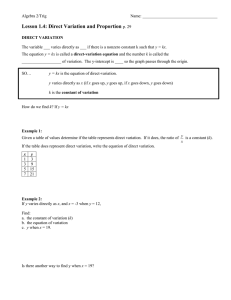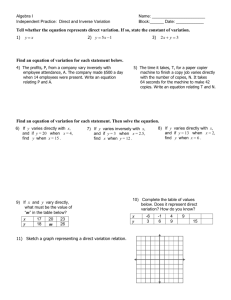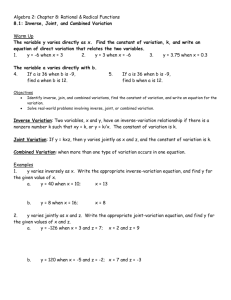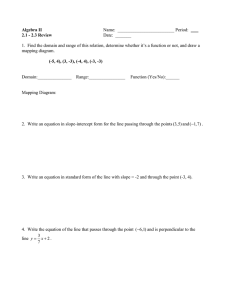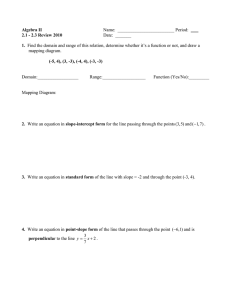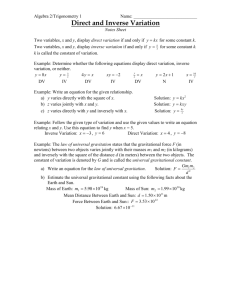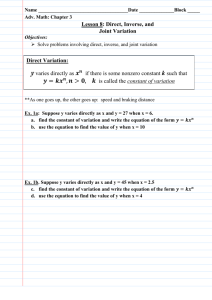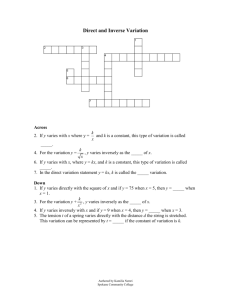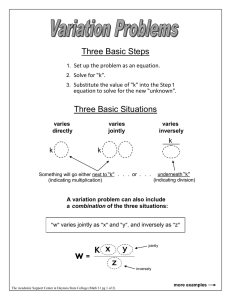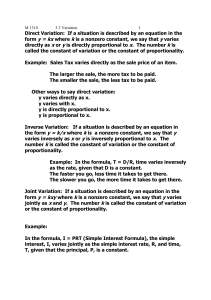Chapter 3: The Nature of Graphs Section 3-8:
advertisement
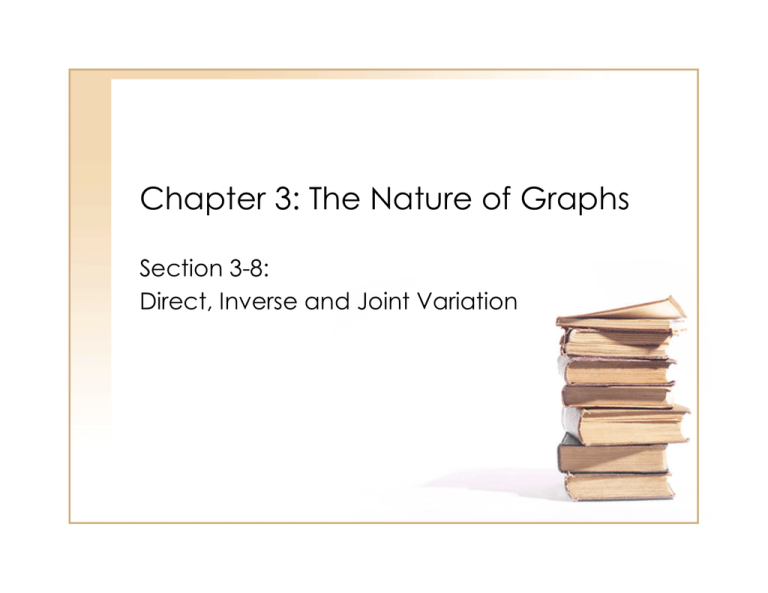
Chapter 3: The Nature of Graphs Section 3-8: Direct, Inverse and Joint Variation Direct Variation n if there is some nonzero constant Y varies directly as k such that y = kx n x n>0 is called the constant of variation. Example: Suppose y varies directly as x and y=45 when x=2.5. Find the constant of variation and write an n equation in the form y = kx Use the equation to find n>0 the value of y when x=4. 45 = k 2.5 18 = k constant of variation y = 18 x Equation y = 18(4) y = 72 Example # 2 When an object such as a car is accelerating, twice the distance d it travels varies directly with the square of the time t elapsed. One car accelerating for 4 minutes travels 1440 feet. Write an equation of direct variation relating travel distance to time elapsed. Then graph the equation. Use the equation to find the distance traveled by the car in 8 minutes. 2d= 180(64) 2d=11520 d=5760ft Inverse Variation n • Y varies inversely as x constant k such that if there is some nonzero x ny = k or y = k xn n>0 This means one value increases while the other decreases. • Example: If y varies inversely as x and y=14 when x=3, find x when y=30. k 3 42 y= x 42 30 = x 14 = k = 42 42 = 1.4 x= 30 Joint Variation n z • Y varies jointly as x and if there is some n nonzero constant k such that y = kx n z n where x ≠ 0, z ≠ 0 and n > 0. • Example: In physics, the work W done in charging a capacitor varies jointly as the charge q and the voltage V. Find the equation of joint variation if a capacitor with a charge of 0.004 coulomb and a voltage of 100 volts performs 0.20 joule of work. • .20 = k .004(100) .20 = k .4 .5 = k W = .5qV HW #22 • Section 3-8 • Pp 194-196 • 13-27 odd, 38, 42, 43, 45
